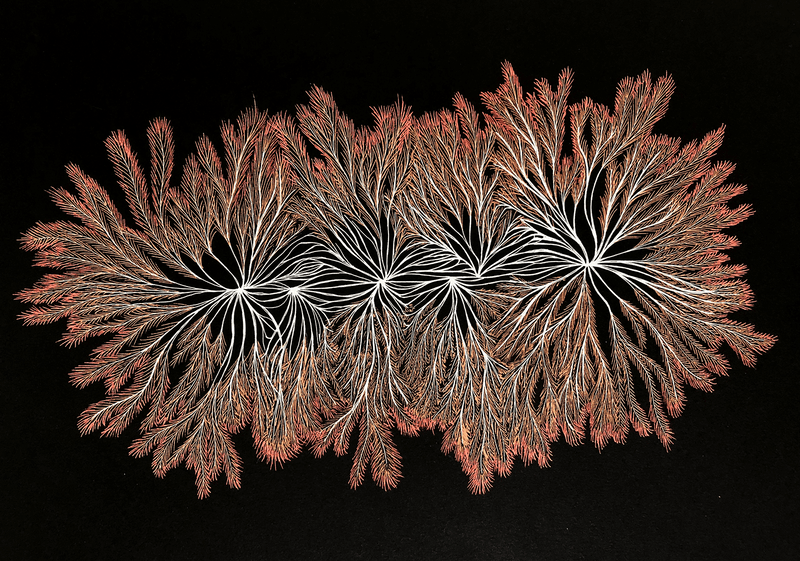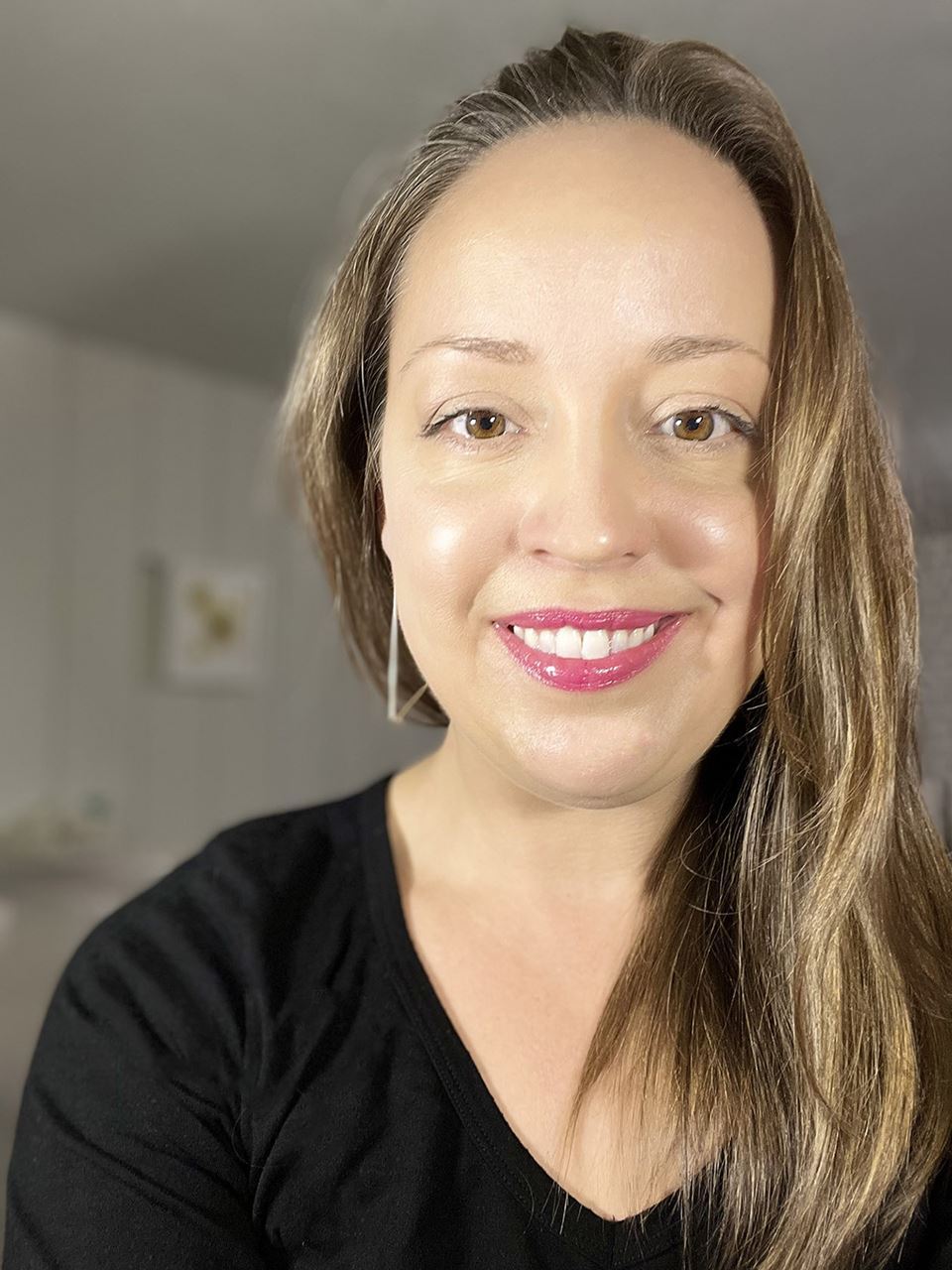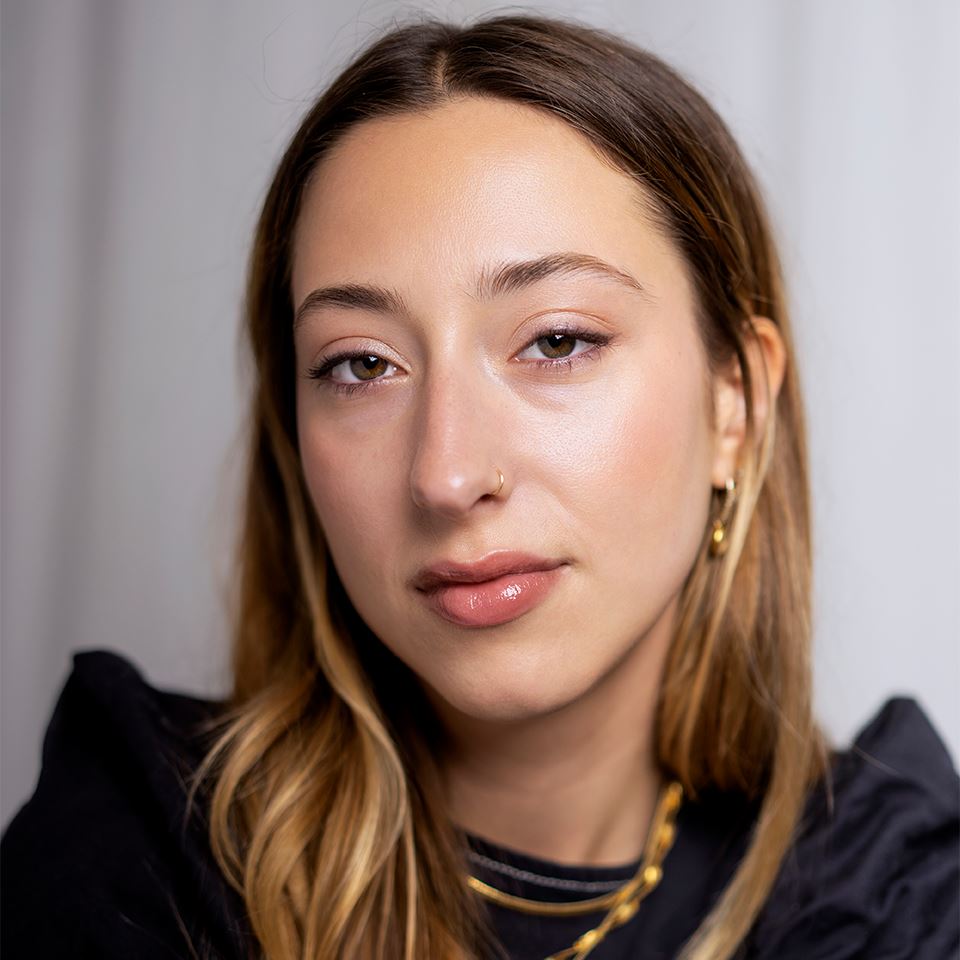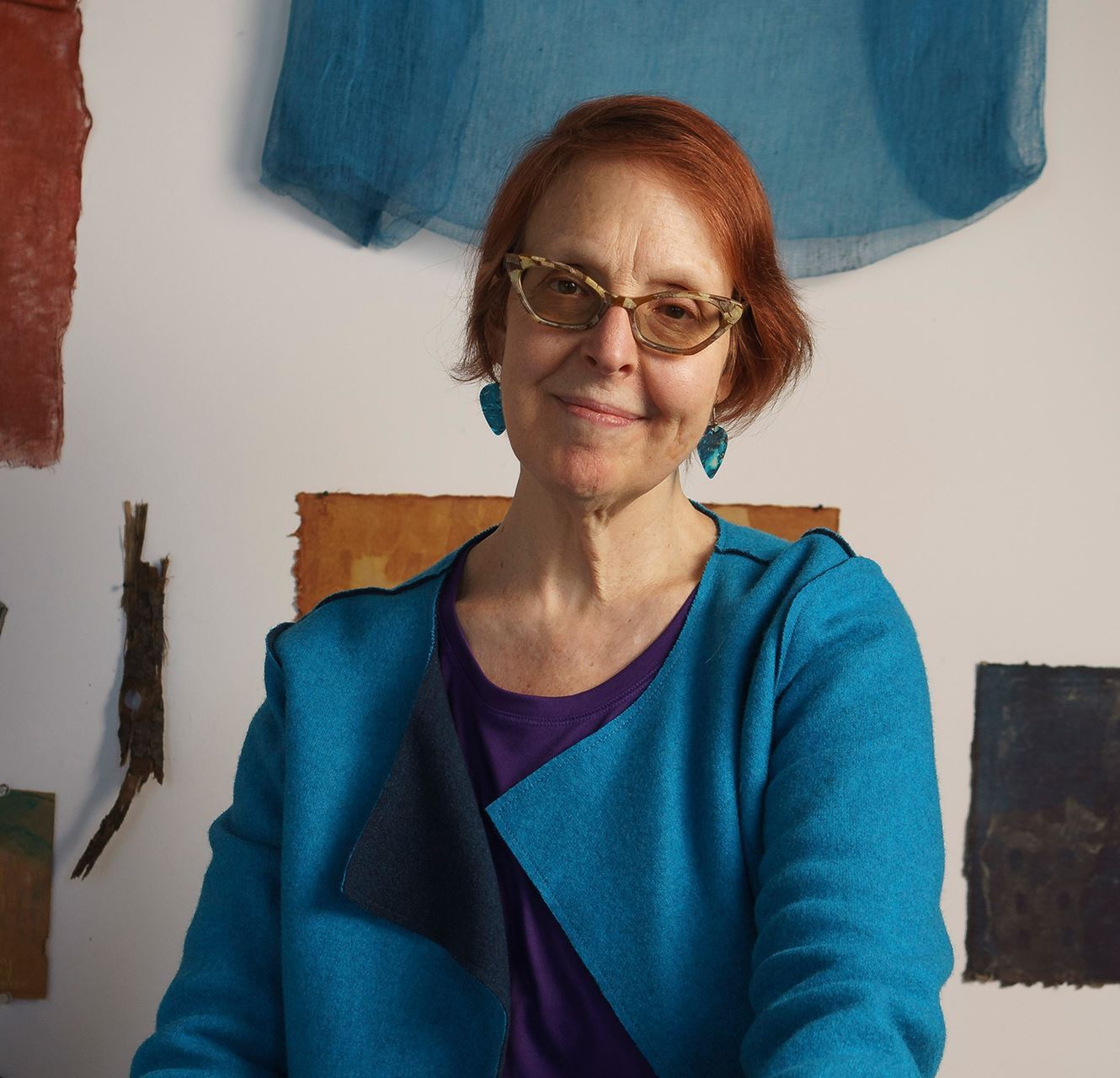
EARTH DAY for Trees: Fungi
Thursday, April 21
United States: 10am PT, 11am MT, 12pm CT, 1pm ET
Europe:18:00 GMT Australia: 5am AEDT, Friday, April 22
Sarah Hearn, Megan Teutschel, Helena Elston, Priscilla Stadler
The entanglements of a forest are vast, complex and mysterious. Today artists seek to understand and express the interconnectedness of trees with all living beings. Members included in the online exhibition and book Embodied Forest will share their diverse artworks and ideas about our human relationship with trees and forests.
For our fungi focused April 2022 Tree Talk, Sarah Hearn will present her drawings that are meditative explorations of the hidden life under the forest floor in the form of mycelium hyphae and bacterial colonies. Helena Elston will share her sustainable and regenerative works, which employs mycelium to collaborate with innovative garment creation to make, unmake and remake materials. Megan Teutschel will speak about her Mushroom Body Collection that uses mushrooms as a metaphor for transforming our internal environment and witnessing the beauty of change from within. Priscilla Stadler will discuss her Rooted series about the symbiotic relationships between tree roots and fungi, which investigates multiple ways of connecting science, learning, artmaking, and intuition.
Tree Talk is moderated by Sant Khalsa, ecofeminist artist and activist, whose work has focused on critical environmental and societal issues including forests and watersheds for four decades.
Co-sponsored by Joshua Tree Center for Photographic Arts
Members and one guest are free. General Public can attend for $10. All participants MUST REGISTER.
Gif Images: ©Sarah Hearn, Mycelium Network 20, 2021; ©Megan Teutschel, Mushroom Lungs; ©Helena Elston, Mycelial Frock, July 2021; ©Priscilla Stadler, Rooted 14, 2020.
Closing Performance at 12:30pm MT
A living Mycelium & Human Holobiont electronic musical entanglement by Nanotopia & The Mycelium Network with Tosca Teran
LIVE from the Coalesce Centre for Biological Art, University at Buffalo, New York.

Presenters:

Sarah Hearn's drawings are meditative explorations of the hidden life under the forest floor in the form of mycelium hyphae and bacterial colonies. Invisible microbial and fungal communities make sensitive and sentient networks that connect forest organisms, regulate nutrient distribution among plants and trees and are largely responsible for recycling decaying matter into soil and eradicating pollutants from our ecosystems. What can we learn from these vastly understudied life forms and their ancient networks of knowledge? Hearn is an interdisciplinary artist, researcher, and educator. Her artwork reveals multitudes of invisible worlds hidden in nature opening a path of discovery to empathetic interspecies learning/appreciation. sarahhearn.art

In late 2018, Megan Teutschel began working with mushrooms from old growth rainforests and began to see the forest floor as the ultimate site of transformation; a place where the natural processes of death and rebirth are happening constantly. In her Mushroom Body Collection, she uses mushrooms as a metaphor for transforming our internal environment and witnessing the beauty of change from within. Teutschel is an artist and naturalist living in the Pacific Northwest. She spent ten years in emergency medicine, where she developed a unique appreciation for the roles that both our internal and external ecosystems play in overall health. After the pandemic began, she left medicine and began to use art as a way to celebrate the transformative power of our bodies. meganteutschel.com

Through a sustainable and regenerative cycle, Helena Elston employs mycelium to collaborate with innovative garment creation to make, unmake and remake materials. Her textiles are an ever-evolving process because they decompose and recreate through mycelial intervention. Mycelium holds these materials and reconnects our human belonging to nature through an acceptance of life cycles. The process also reestablishes the fundamental connection between design and nature. As a mixed media textile designer, material researcher and storyteller, Elston interconnects narrative, ecology, and regeneration. She recently graduated with an MA in Textile Design from The Royal College of Art, where she gained sustainable material knowledge and created mycelial textiles made to decompose. helenaelston.com

Priscilla Stadler’s initial response to learning about the symbiotic relationships between tree roots and fungi has led her to dig more deeply into the nature of mycorrhizal connection for her Rooted series and branch out into media that include scratchboard drawing, spray paint on paper, sumi ink, and the human interaction of social practice. She engages these media to investigate multiple ways of connecting science, learning, artmaking, and intuition. Stadler explores the resilient and precarious structures of connectedness, whether among humans or plants. Making buildings from cheesecloth, envisioning underground networks between fungi and tree roots, and designing open-ended dialogues as starting points for reflection and community activism are components of her practice. Stadler’s projects have received support from organizations including MoreArt, Queens Council on the Arts, Socrates Sculpture Park, Flux Factory, the Wassaic Project, and Art in Odd Places. priscillastadler.com